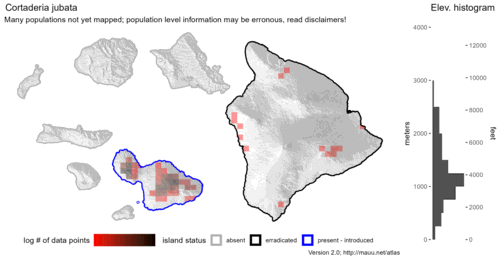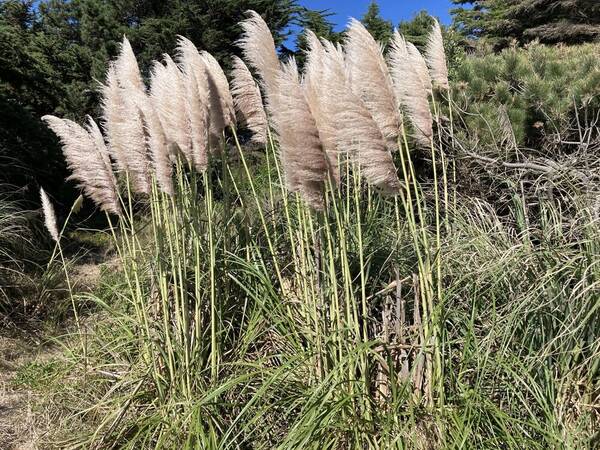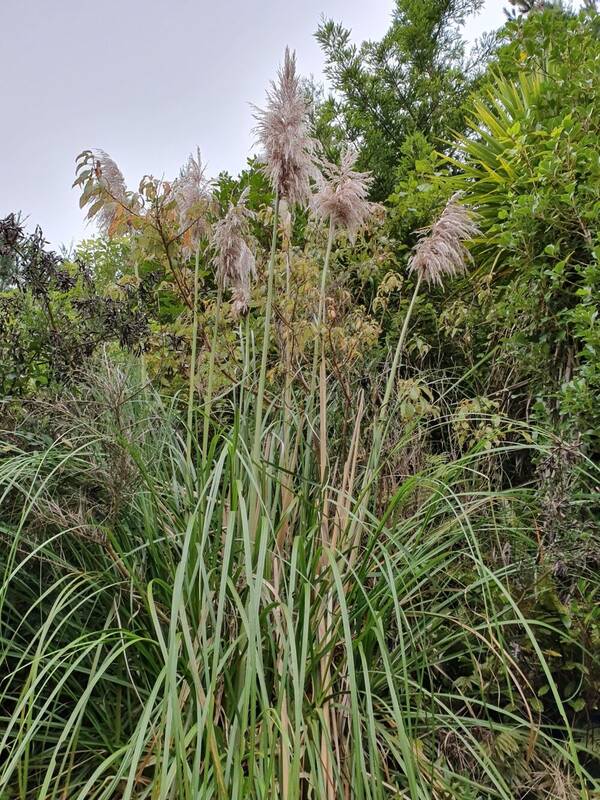Info
Subfamily: Danthonioideae
Genus etymology: Cortaderia = "a knife used for cutting honeycomb" [Spanish] refering to the sharp edges of the leaves
Species etymology: jubata = "mane possessing" [Latin] refering to the inflorescence resmbleing a fox tail
Photosynthetic type: C3 (cool season)
Nativity: naturalized - intentional
First recorded in Hawaiʻi: 1987
Legal status: HDOA - noxious weed
Map


Plant
 image credit: Andy_McKay
image credit: Andy_McKay image credit: John_Barkla
image credit: John_BarklaDescription
Plants pistillate (in North America). Culms 2-7 m, 4-7 times as long as the panicles. Leaves primarily basal; sheaths hairy, sometimes densely so; ligules 1-2 mm; blades 1 m long or longer, 2-10 cm wide, mostly flat, often horizontal, dark green, abaxial surfaces hairy near the base. Panicles 30-100 cm, elevated well above the basal foliage, deep violet when young. Spikelets 14-16 mm, pistillate; florets readily disarticulating; calluses about 0.6 mm; lemmas about 10 mm, long-attenuate to an awn, awns to 1 mm; paleas to 4 mm, keels ciliate, apical hairs extending beyond the body of the paleas; stigmas usually not exerted. Caryopses to 2.5 mm; embryos to 1 mm. 2n = 108.
(Description source: Barkworth, M.E., Capels, K.M., Long, S. & Piep, M.B. (eds.) 2003. Flora of North America, north of Mexico. Volume 25. Magnoliophyta: Commelinidae (in part): Poaceae, Part 2. Oxford University Press, New York. 783 pp. http://floranorthamerica.org/Cortaderia_jubata )